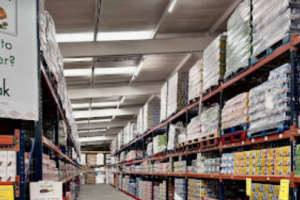Looking at how retail options have changed, Relex Solutions said that, previously, a convenience store’s main competition was simply another c-store until recently, as quick commerce businesses have made aggressive moves into the convenience space, promising delivery of small baskets within as little as 10 minutes.
With competition increasing, the value of levelling digital technologies and automation solutions in retail is rising. According to McKinsey, 30% to 40% of retail tasks related to processes such as merchandise planning or the supply chain can be automated.
Blatherwick said: “C-stores face unique challenges due to their small footprint and high cost per square foot. They must balance high availability with the ever-present risk of waste and lack of backroom space to hold safety stock. They also need to ensure that their customers can find exactly what they want and quickly make a purchase.”
Space and inventory management are equally important for c-store staff:
- Stores have a limited number of associates available to handle all essential tasks, such as stocking shelves (including fresh items) and keeping aisles free of clutter, while also checking out customers.
- Store-level planograms, which are difficult to create manually, are highly valuable to guide staff in maximizing existing space and optimising replenishment schedules.
- Shipments to replenish existing items, stock new products or support short-term promotions must arrive on an as-needed basis and be ready to go direct-to-shelf.

Andrew Blatherwick
Blatherwick continued: “C-stores must move toward a technologically advanced, unified system that uses a single source of data to inform decisions about operational tasks, helping them stay competitive in a rapidly changing landscape where there are so many moving parts to supply chain management.
“They also need a system to automate these decisions– from replenishment orders, to staff scheduling, to space planning– and further streamline store operations to ensure quality customer service.”
“It’s unlikely that brick-and-mortar convenience stores, five years from now, will be replaced by delivery services. Yet, without striking a careful balance between protecting margins and maximising the shopping experience, c-stores stand to lose in-store customers who would rather pay a bit extra to have their basket come to them, taking a hit to their top and bottom lines.”
 Talking Retail Grocery and product news for independent retailers
Talking Retail Grocery and product news for independent retailers






